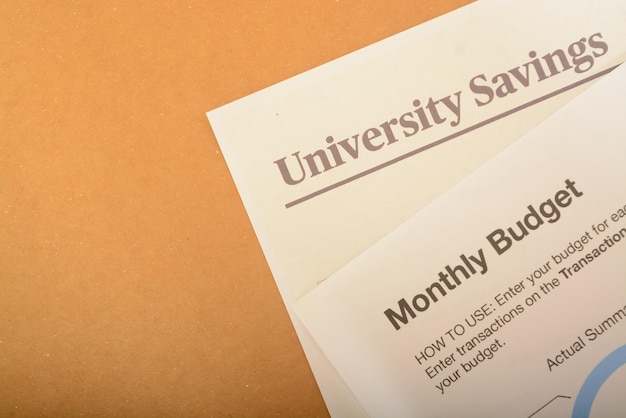Early College Credit: Save $10,000 on Tuition with Dual Enrollment?

Early college credit, particularly through dual enrollment programs, allows high school students in the US to take college courses and earn both high school and college credit, potentially saving families significant tuition costs – possibly up to $10,000 or more.
Are you looking for ways to reduce the skyrocketing costs of college tuition? Early college credit programs, also known as dual enrollment, might be the answer you’ve been searching for.
What is Early College Credit and Dual Enrollment?
Early college credit and dual enrollment programs offer a head start on higher education. These initiatives allow high school students to simultaneously earn credits towards their high school diploma and a college degree. Understanding the fundamentals is the first step to unlocking potential savings.
These programs are becoming increasingly popular as families seek ways to make college more affordable and accessible. By participating, students can experience college-level coursework while still in a familiar high school environment.
The Basics of Dual Enrollment
Dual enrollment allows high school students to take college courses, often at a local community college or university, and receive credit for both their high school graduation requirements and their future college degree.
Benefits for High School Students
Participating in dual enrollment can provide numerous advantages, including exposure to college-level material, improved academic performance, and increased confidence in their ability to succeed in college. It’s a great way to ease the transition from high school to higher education.
- Experience college-level coursework while still in high school.
- Gain a competitive edge when applying to colleges.
- Potentially graduate from college early, saving time and money.
- Explore different academic interests before committing to a major.
In conclusion, early college credit and dual enrollment offer a valuable opportunity for high school students to get a head start on their college education, gain experience with college-level courses, and potentially save thousands of dollars on tuition costs.
The Potential Savings: Can You Really Save $10,000?
One of the most compelling reasons to consider early college credit is the potential for significant financial savings. But can you actually save $10,000 or more? Let’s break down the numbers and explore the possibilities.
The amount you can save depends on various factors, including the cost of tuition at the colleges or universities you’re considering, the number of credits you earn through dual enrollment, and whether those credits are transferable.
Calculating Potential Savings
To estimate your potential savings, research the tuition costs at your target colleges and compare them to the cost of dual enrollment courses, if any. Many dual enrollment programs offer courses at a reduced rate or even for free.
Real-Life Examples of Savings
Consider a student who completes 30 college credits through dual enrollment at a cost of $100 per credit hour. That’s a total cost of $3,000. If the same 30 credits would have cost $400 per credit hour at a four-year university, the student would save $9,000.

- Compare the cost of dual enrollment courses to standard college tuition rates.
- Factor in potential savings on room and board by graduating early.
- Consider the long-term benefits of reduced student loan debt.
- Research scholarship opportunities specifically for dual enrollment students.
Ultimately, the potential savings from early college credit can be substantial, especially for students who plan carefully and maximize the number of transferable credits they earn.
How to Find and Enroll in Dual Enrollment Programs
Finding and enrolling in early college credit, or dual enrollment, programs requires research and planning. Understanding the options available in your area and the enrollment process is crucial.
Start by contacting your high school guidance counselor or college advisor. They can provide information about dual enrollment programs offered in partnership with local colleges and universities.
Researching Program Options
Explore the websites of community colleges and universities in your area. Look for dedicated dual enrollment or early college programs and review their eligibility requirements, course offerings, and application procedures.
Meeting Eligibility Requirements
Most dual enrollment programs have specific academic requirements, such as a minimum GPA or standardized test scores. Make sure you meet these requirements before applying.

- Contact your high school guidance counselor for program information.
- Research dual enrollment programs at local colleges and universities.
- Meet all eligibility requirements, including GPA and test scores.
- Complete the application process, including submitting transcripts and test scores.
In summary, finding and enrolling in dual enrollment programs involves thorough research, careful planning, and meeting the necessary eligibility requirements. The potential rewards, in terms of both academic advancement and cost savings, make the effort worthwhile.
Navigating the Transferability of Credits
One of the critical considerations when pursuing early college credit is the transferability of those credits to your desired four-year college or university. Not all credits are created equal, and careful planning is essential.
Before enrolling in dual enrollment courses, research the transfer policies of the colleges you are considering attending after high school. Contact the admissions office or academic advising department to inquire about the transferability of specific courses.
Understanding Transfer Agreements
Some states and institutions have established transfer agreements that guarantee the acceptance of certain credits earned at community colleges. These agreements can streamline the transfer process and ensure that your hard work pays off.
Strategies for Maximizing Transferability
Choose dual enrollment courses that are likely to transfer, such as introductory courses in core subjects like math, science, English, and history. Avoid specialized or vocational courses that may not align with the curriculum at your target colleges.
In conclusion, navigating the transferability of credits requires proactive research, careful planning, and a strategic approach to course selection. By understanding the transfer policies of your target colleges and universities, you can maximize the value of your dual enrollment experience.
Weighing the Pros and Cons of Early College Credit
While early college credit programs offer numerous benefits, it’s essential to weigh the pros and cons before making a decision. These programs aren’t a one-size-fits-all solution, and a careful evaluation of your individual circumstances is necessary.
On the pro side, dual enrollment can save you money on tuition, accelerate your path to a college degree, and provide a challenging academic experience. However, there are also potential drawbacks to consider.
Potential Advantages
Dual enrollment allows you to get a head start on college, explore different academic subjects, and gain confidence in your ability to succeed in higher education. It can also boost your college application and make you a more competitive candidate.
Potential Disadvantages
Taking college courses while still in high school can be demanding, requiring strong time management skills and a commitment to academic excellence. Additionally, dual enrollment may limit your participation in extracurricular activities or social events at your high school.
- Consider your academic preparedness and time management skills.
- Evaluate the impact on your high school experience and social life.
- Research the transferability of credits to your target colleges.
- Discuss the pros and cons with your parents, guidance counselor, and college advisor.
In short, weighing the pros and cons of early college credit programs involves a careful assessment of your individual strengths, weaknesses, and goals. By considering all factors, you can make an informed decision that aligns with your academic and personal aspirations.
Success Stories: Real Students, Real Savings
The concept of early college credit sounds promising, but what about the real-world impact? Exploring success stories of students who have benefited from dual enrollment can provide valuable insights and inspiration.
Numerous students have successfully leveraged dual enrollment to save money on tuition, graduate from college early, and gain a competitive edge in the job market. Their experiences highlight the transformative potential of these programs.
Student A: Graduating Early
One student completed 60 college credits through dual enrollment and was able to graduate from college two years early, saving tens of thousands of dollars in tuition and living expenses.
Student B: Exploring Academic Interests
Another student used dual enrollment to explore different academic subjects and discovered a passion for engineering, which ultimately led to a successful career.
These examples showcase the diverse ways in which early college credit can benefit students. From accelerating their academic journey to discovering their true calling, dual enrollment can open doors to a brighter future.
| Key Point | Brief Description |
|---|---|
| 💰 Tuition Savings | Dual enrollment can significantly reduce college tuition costs. |
| 🚀 Early Graduation | Earn credits in high school to graduate from college faster. |
| 📚 College Experience | Get a head start on college-level coursework and expectations. |
| ✅ Credit Transfer | Ensure credits transfer to your desired four-year college. |
Frequently Asked Questions (FAQ)
▼
Dual enrollment allows high school students to take college courses and earn both high school and college credit simultaneously, offering a head start on their higher education.
▼
Savings vary depending on tuition rates and earned credits, but many students can save thousands of dollars, potentially reaching $10,000 or more, by reducing their college coursework.
▼
Not all credits are universally transferable. Research the transfer policies of your target colleges and choose courses wisely for maximum credit acceptance after graduating high school.
▼
Eligibility often includes a minimum GPA, standardized test scores, and counselor recommendations. Requirements vary by program, so check specific institution guidelines before applying.
▼
Dual enrollment does not negatively impact high school graduation, and dual credit courses will still count towards graduation requirements for high school.
Conclusion
Early college credit programs, especially dual enrollment, offer a compelling path to reducing college costs and accelerating academic progress for high school students. With careful planning and a strategic approach to course selection, students can save thousands of dollars and gain a valuable head start on their college journey.





